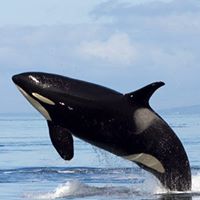Edward G Himes
age ~63
from Pittsford, NY
- Also known as:
-
- Edward Fitz Gerald
- Edward Fitzgerald
- Edward G Hines
- Phone and address:
-
4 Coach Side Ln, Pittsford, NY 14534
585 248-0481
Edward Himes Phones & Addresses
- 4 Coach Side Ln, Pittsford, NY 14534 • 585 248-0481
- Rochester, NY
- Plymouth, MI
- Novi, MI
- Detroit, MI
- Farmington Hills, MI
- Livonia, MI
Work
-
Position:Professional/Technical
Education
-
Degree:High school graduate or higher
Name / Title
Company / Classification
Phones & Addresses
Manager, Owner
Kelson Solutions LLC
Automotive · Business Services, Nec, Nsk · Commercial Physical Research
Automotive · Business Services, Nec, Nsk · Commercial Physical Research
6985 Hackney Cir, Victor, NY 14564
Resumes

Managing Director
view sourceLocation:
4 Coach Side Ln, Pittsford, NY 14534
Industry:
Automotive
Work:
Eghimes Consulting
Managing Director
Managing Director
Education:
University of Michigan, Ann Arbor, Michigan 1999
Masters, Engineering Michigan State University, East Lansing, Michigan 1985
Bachelors, Bachelor of Science, Mechanical Engineering University of Michigan College of Engineering
Masters, Engineering Michigan State University, East Lansing, Michigan 1985
Bachelors, Bachelor of Science, Mechanical Engineering University of Michigan College of Engineering
Skills:
Six Sigma
Development
Fuel Cells
Engineering Management
Vehicles
Lean Manufacturing
Apqp
Engineering Talent Recruiting and Hiring
Manufacturing Engineering
Systems Engineering
Program/Project Management
Root Cause Analysis
Failure Mode and Effects Analysis
System Development
5S
Technical Leadership
Automotive Engineering
Automotive
Cell
Supplier Quality
Fmea
Control Systems Design
Engineering
Advanced Embedded Control System and Algorithm Development
Product Design
Developing/Motivating Direct Reports and Others
Gd&T
Mechanical Engineering
Dfmea
Program Management
Testing
Design For Manufacturing
Machining
Manufacturing
Design of Experiments
Value Stream Mapping
Ts16949
Engineering Management and Leadership
Powertrain
Ppap
Product Development
Kaizen
Kanban
Spc
Process Engineering
Calibration
Continuous Improvement
Pem Fuel Cell Powertrain Product Development
Services
Production Powertrain Application and Calibration
System Architecture
Design Failure Mode and Effect Analysis
Development
Fuel Cells
Engineering Management
Vehicles
Lean Manufacturing
Apqp
Engineering Talent Recruiting and Hiring
Manufacturing Engineering
Systems Engineering
Program/Project Management
Root Cause Analysis
Failure Mode and Effects Analysis
System Development
5S
Technical Leadership
Automotive Engineering
Automotive
Cell
Supplier Quality
Fmea
Control Systems Design
Engineering
Advanced Embedded Control System and Algorithm Development
Product Design
Developing/Motivating Direct Reports and Others
Gd&T
Mechanical Engineering
Dfmea
Program Management
Testing
Design For Manufacturing
Machining
Manufacturing
Design of Experiments
Value Stream Mapping
Ts16949
Engineering Management and Leadership
Powertrain
Ppap
Product Development
Kaizen
Kanban
Spc
Process Engineering
Calibration
Continuous Improvement
Pem Fuel Cell Powertrain Product Development
Services
Production Powertrain Application and Calibration
System Architecture
Design Failure Mode and Effect Analysis

Edward Himes
view source
Edward Himes
view sourceUs Patents
-
Method Of Bounding Cam Phase Adjustment In An Internal Combustion Engine
view source -
US Patent:6748910, Jun 15, 2004
-
Filed:Oct 30, 2002
-
Appl. No.:10/283756
-
Inventors:Edward George Himes - Novi MI
Jeffrey M. Pfeiffer - Walled Lake MI -
Assignee:Delphi Technologies, Inc. - Troy MI
-
International Classification:F01L 134
-
US Classification:123 9015, 12340623
-
Abstract:A cam phase control method for an internal combustion engine schedules cam phase to optimize emissions and fuel economy, but bounds the scheduled cam phase for continuous achievement of the desired inlet airflow. The volumetric efficiency required to achieve the desired inlet airflow at a specified intake manifold vacuum is compared to the maximum achievable volumetric efficiency at the specified vacuum. When the required volumetric efficiency is less than the maximum value, the cam phase is controlled according to the lesser of the scheduled cam phase and the highest cam phase for achieving the required volumetric efficiency; when the required volumetric efficiency is equal to or greater than the maximum value, the cam phase is controlled to a setting that maximizes the volumetric efficiency.
-
Method And Apparatus To Control Fuel Metering In An Internal Combustion Engine
view source -
US Patent:7024301, Apr 4, 2006
-
Filed:Jan 14, 2005
-
Appl. No.:11/036212
-
Inventors:Krishnendu Kar - Webster NY, US
Andrew P. Bagnasco - Plymouth MI, US
Sergio Eduardo Garcia - Webster NY, US
Edward George Himes - Pittsford NY, US -
Assignee:Delphi Technologies, Inc. - Troy MI
-
International Classification:F02D 41/14
-
US Classification:701104, 123478
-
Abstract:A system and method for controlling fuel delivery through a fuel injection system to an internal combustion engine is described. An engine controller calculates a mass of fuel for delivery to one of the cylinders through one of the fuel injectors, based upon the operation of the internal combustion engine. Gas temperature in the intake runner of the cylinder is determined, and a compensation term is selected based upon the calculated mass of fuel and the determined gas temperature in the intake runner of the cylinder. The calculated mass of fuel is adjusted using the compensation term, and the controller controls open time of the fuel injector based upon the adjusted calculated mass of fuel.
-
Adaptive Limitation Of Standby Mode To Enhance Fuel Cell System Life
view source -
US Patent:20130177826, Jul 11, 2013
-
Filed:Jan 6, 2012
-
Appl. No.:13/345288
-
Inventors:Daniel I. HARRIS - HONEOYE FALLS NY, US
Derek R. LEBZELTER - FAIRPORT NY, US
John P. SALVADOR - Penfield NY, US
William H. PETTIT - Rochester NY, US
Akbar CHOWDHURY - Pittsford NY, US
Edward G. HIMES - Pittsford NY, US -
Assignee:GM GLOBAL TECHNOLOGY OPERATIONS LLC - DETROIT MI
-
International Classification:H01M 8/04
-
US Classification:429428
-
Abstract:A system and method for reducing the frequency of stack stand-by mode events, if necessary, as a fuel cell stack ages and experiences lower performance. The method determines an irreversible voltage loss of the fuel cell stack at predetermined time intervals and determines a stack voltage degradation variable based on the irreversible voltage loss. The method also determines if the stack voltage degradation variable indicates that the fuel cell stack will not meet predetermined stack end-of-life voltage requirements and calculates a maximum allowed voltage degradation rate of the fuel cell stack. The method calculates a maximum number of stand-by mode events per unit time that can be allowed to prevent the stack from exceeding the maximum allowed degradation rate and controls the number of stand-by mode events based on the calculated maximum number of stand-by mode events.
-
Fuel Control System With Purge Gas Modeling And Integration
view source -
US Patent:6321735, Nov 27, 2001
-
Filed:Mar 8, 1999
-
Appl. No.:9/264524
-
Inventors:Malcolm James Grieve - Fairport NY
Edward George Himes - Novi MI
Ningsheng Qiao - Troy MI -
Assignee:Delphi Technologies, Inc. - Troy MI
-
International Classification:F02D 4114
-
US Classification:123674
-
Abstract:A fuel control system that estimates the fuel quantity received from purging of an evaporative emission control system and then accounts for the purge fuel in determining the amount of fuel to be injected into a cylinder of an internal combustion engine. Purge fuel quantity is represented by a purge equivalence ratio which is computed based upon an estimate of the hydrocarbon concentration in the purge gas. The hydrocarbon concentration is adaptively learned using an iterative routine that updates the estimate based on the integrated error between the actual and desired air/fuel ratios. Wall wetting and closed loop corrections are applied only to the non-purge fuel portion of the total fuel delivered to the engine cylinder. The closed loop control includes a block learn memory that provides a correction to the factory fuel calibration. The hydrocarbon concentration is updated using the integrated error during purging, whereas the block learn memory is updated using the integrated error during periods when no purging is occurs.
-
Method Of Increasing Torque And/Or Reducing Emissions By Varying The Timing Of Intake And/Or Exhaust Valves
view source -
US Patent:63086719, Oct 30, 2001
-
Filed:Sep 11, 2000
-
Appl. No.:9/658596
-
Inventors:Dennis C. Reed - Plymouth MI
Martin Muller - Ann Arbor MI
Edward George Himes - Novi MI
Bart Hubert Schreurs - Athus, BE
Joon-Ho Yoo - Ann Arbor MI -
Assignee:Delphi Technologies, Inc. - Troy MI
-
International Classification:F01L 134
F02D 910 -
US Classification:123 9015
-
Abstract:A method of improving the operating characteristics of an internal combustion engine equipped with electronic throttle control employs variable cam timing to vary the phasing of the intake valves and/or exhaust valves so as to achieve lower feed gas emissions and improved fuel economy while delivering as closely as possible the desired torque. The method can be implemented using a fuel-lead strategy or an air-lead strategy. Whenever a change is requested in the amount of torque, the method responds by adjusting the amount of fuel flow, the spark timing, the position of the throttle and/or the positions of the intake valves and/or the exhaust valves so as to deliver the desired torque. The method adjusts those operating parameters in a way that improves the ability of the engine to deliver the desired torque, produce less feed gas emissions, idle more stably, and consume less fuel.
-
Evaporative Emission Control System With Reduced Running Losses
view source -
US Patent:61962031, Mar 6, 2001
-
Filed:Mar 8, 1999
-
Appl. No.:9/264561
-
Inventors:Malcolm James Grieve - Fairport NY
Edward George Himes - Novi MI
Ningsheng Qiao - Troy MI -
Assignee:Delphi Technologies, Inc. - Troy MI
-
International Classification:F02M 3302
-
US Classification:123520
-
Abstract:An evaporative emission control system that operates in a running loss mode and an active weathering mode during purge to substantially eliminate running losses during operation of an internal combustion engine. The evaporative emission control system includes a charcoal canister, a canister vent valve, and a purge valve that permits fuel vapors from the canister and engine fuel tank to be purged into the engine's air intake manifold. The running loss mode operates to close the canister vent valve when the gas pressure within the fuel tank increases above a threshold. The vent valve is maintained closed until the fuel tank pressure drops below a lower limit. This prevents running losses by closing the vent when higher pressures are detected that cannot be reduced by purging under the current engine operating conditions. The active weathering mode cycles the canister vent valve open and closed when the volatility of the fuel is determined to be too high for the current ambient temperature. This cycling forces air changes within the fuel tank to accelerate the weathering of the volatile components in the fuel.
-
Transient Inlet Relative Humidity Estimation Via Adaptive Cathode Humidification Unit Model And High Frequency Resistance
view source -
US Patent:20140199605, Jul 17, 2014
-
Filed:Jan 15, 2013
-
Appl. No.:13/741803
-
Inventors:- Detroit MI, US
Sergio E. Garcia - Webster NY, US
Todd K. Preston - Rochester NY, US
Edward G. Himes - Pittsford NY, US -
Assignee:GM GLOBAL TECHNOLOGY OPERATIONS LLC - Detroit MI
-
International Classification:H01M 8/04
-
US Classification:429413
-
Abstract:An apparatus and method to determine the relative humidity of a fuel cell system. A controller is cooperative with a first device and a second device to receive a valve signal and a high frequency resistance value. The controller controls the relative humidity of a fuel cell stack based on the estimation of the relative humidity of the fuel cell stack based on one or more algorithms. The controller modifies the relative humidity of the fuel cell stack through changes in the position of a valve based on at least one of the valve signal and the high frequency resistance value. In one form, the relative humidity of the fuel cell system is determined without the need of a humidity sensor.
Myspace
Youtube

Edward K Himes
view source
Edward Himes
view source
Edward Himes
view source
Edward Himes
view source
Edward Himes
view sourceClassmates

Edward Himes
view sourceSchools:
Raymond Temple Elementary School Buena Park CA 1973-1977, La Palma Junior High School Buena Park CA 1977-1979, Melodyland High School Anaheim CA 1981-1983
Community:
Corine Quezada, Kathi Sepulveda, Yolanda Zuloaga, Kenny Hedgpeth

Edward Himes
view sourceSchools:
Manchester High School Manchester OH 1963-1967

University of California ...
view sourceGraduates:
Richard Himes (1974-1978),
James Sullivant (1973-1976),
Kristopher Rinehart (1993-1996),
Edward Himes (1983-1987)
James Sullivant (1973-1976),
Kristopher Rinehart (1993-1996),
Edward Himes (1983-1987)
Googleplus

Edward Himes
Flickr
Get Report for Edward G Himes from Pittsford, NY, age ~63
















